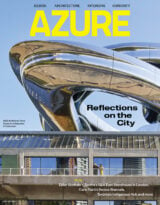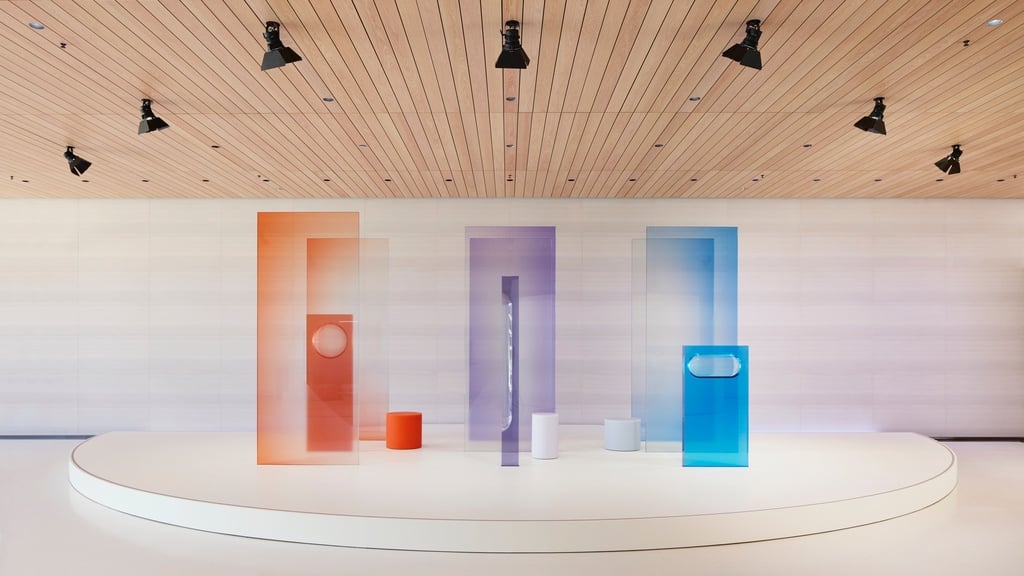
Apple’s latest product launch, held this past September at the company’s Cupertino headquarters, included wonders both big and small. At the diminutive end of the spectrum was the ultra-thin iPhone Air, a feat of hardware engineering that slims the device down to a mere 5.6 millimetres (just in time for the return of skinny jeans, perhaps). This introduction was joined by the colourful iPhone 17 family, as well as a fresh generation of Apple Watch models and AirPods Pro. But Apple also had another, monumental surprise up its sleeves for industrial design lovers: a towering installation by Dutch designer and artist Sabine Marcelis inspired by hardware and software elements from the company’s latest devices.
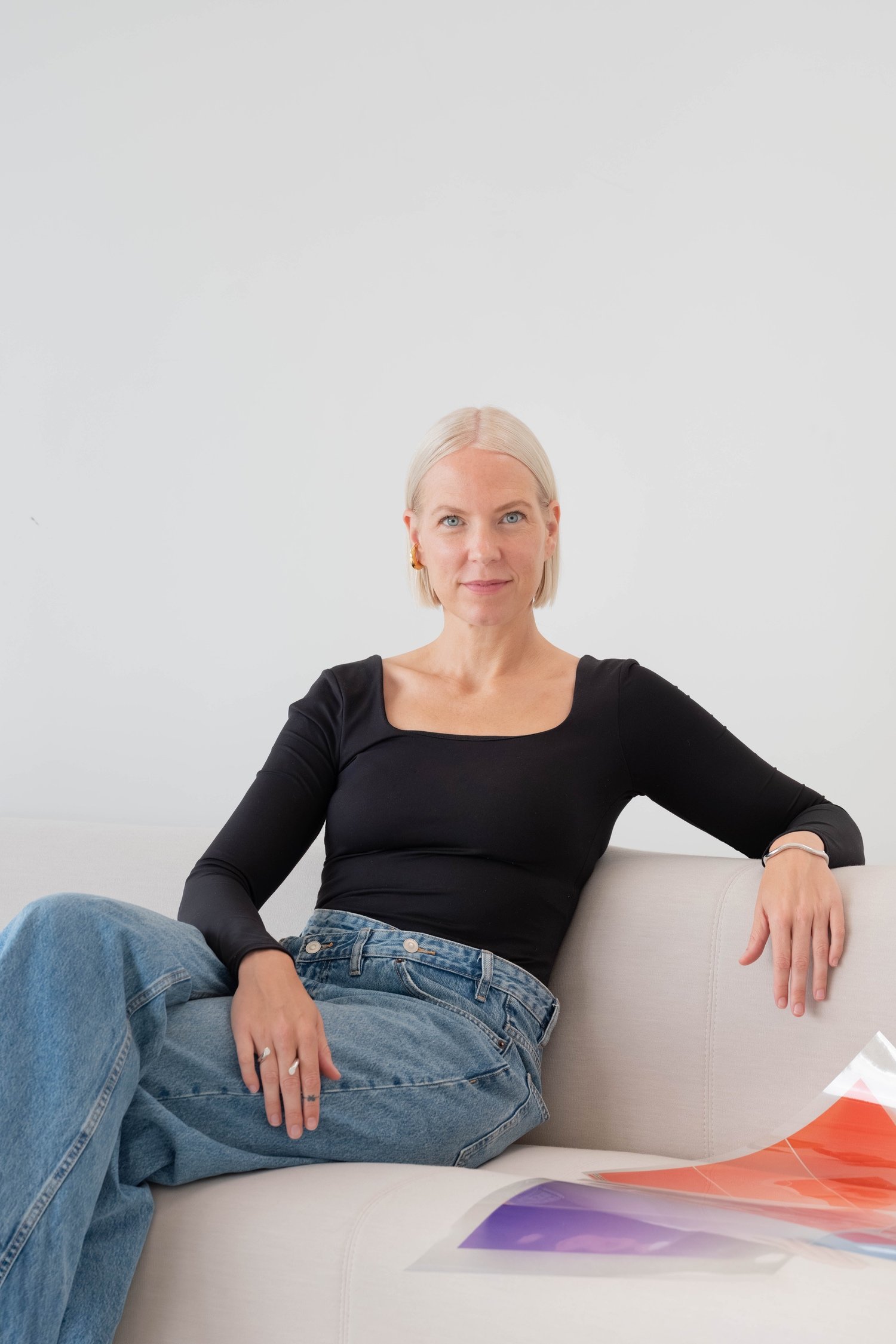
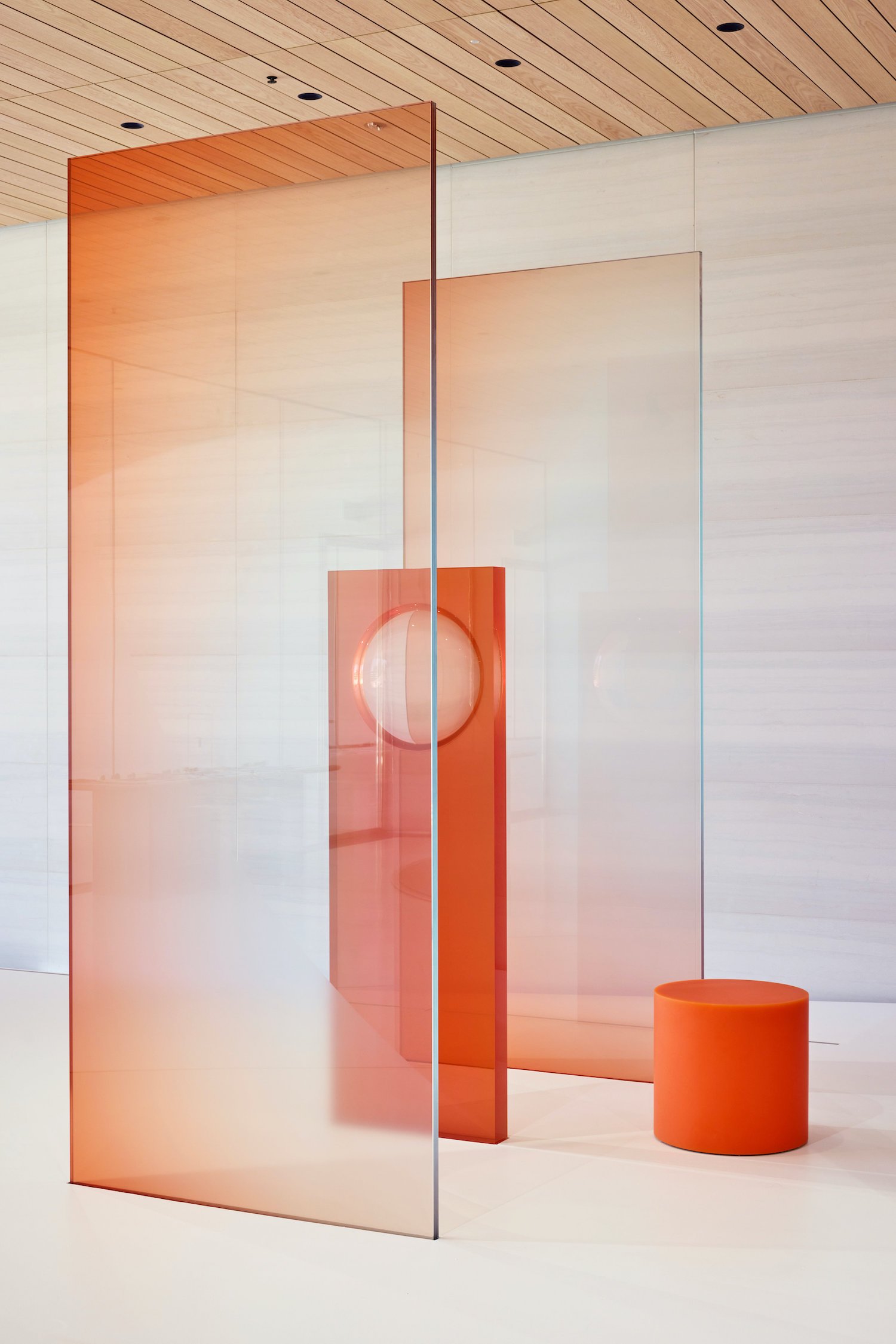
Based in Rotterdam, Marcelis is known for creating monolithic pieces that achieve poetic optical effects. Sometimes those take the form of furniture, like her glass-top dining tables featuring reflective gradients, and other times they skew purely sculptural, like the Light Horizon columns that she stationed outside of the Stedelijk Museum Schiedam in the Netherlands last year. “I’m always trying to evoke a sense of wonder. To draw people in and have them look at the work again to try to better understand how it’s made or how it works,” Marcelis explains.
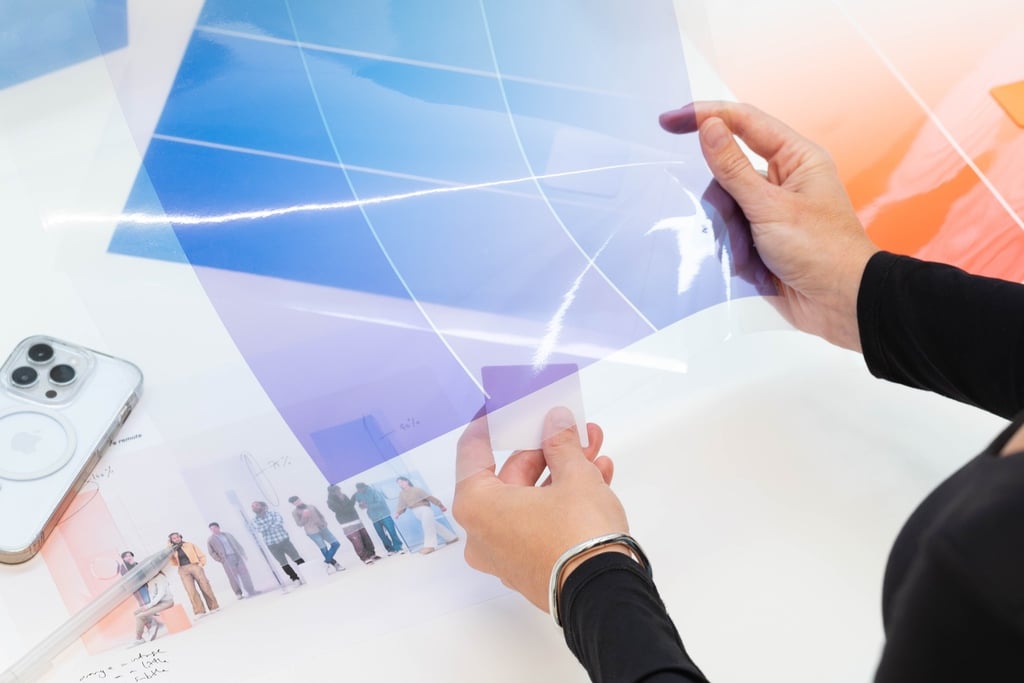
This portfolio made her a natural choice to create an artistic interpretation of the “Liquid Glass” visual style of Apple’s latest operating system, which itself balances beauty and functionality. “My work is always about colour and light and creating interesting material effects. This project was no different,” said Marcelis over email. “Taking the new software design with Liquid Glass as a starting point, the installations found in the Apple Park Observatory all respond to that interface.”
If you haven’t updated your iPhone software to iOS26 yet, here’s a primer on what sets Liquid Glass apart. Basically, the new user interface adds depth and dynamism to day-to-day iPhone operations. Now, key tasks are accomplished using translucent buttons that resemble drops of water layered over top of underlying content — complete with realistic reflection and refraction effects that evolve in real time as you scroll or interact with your apps.
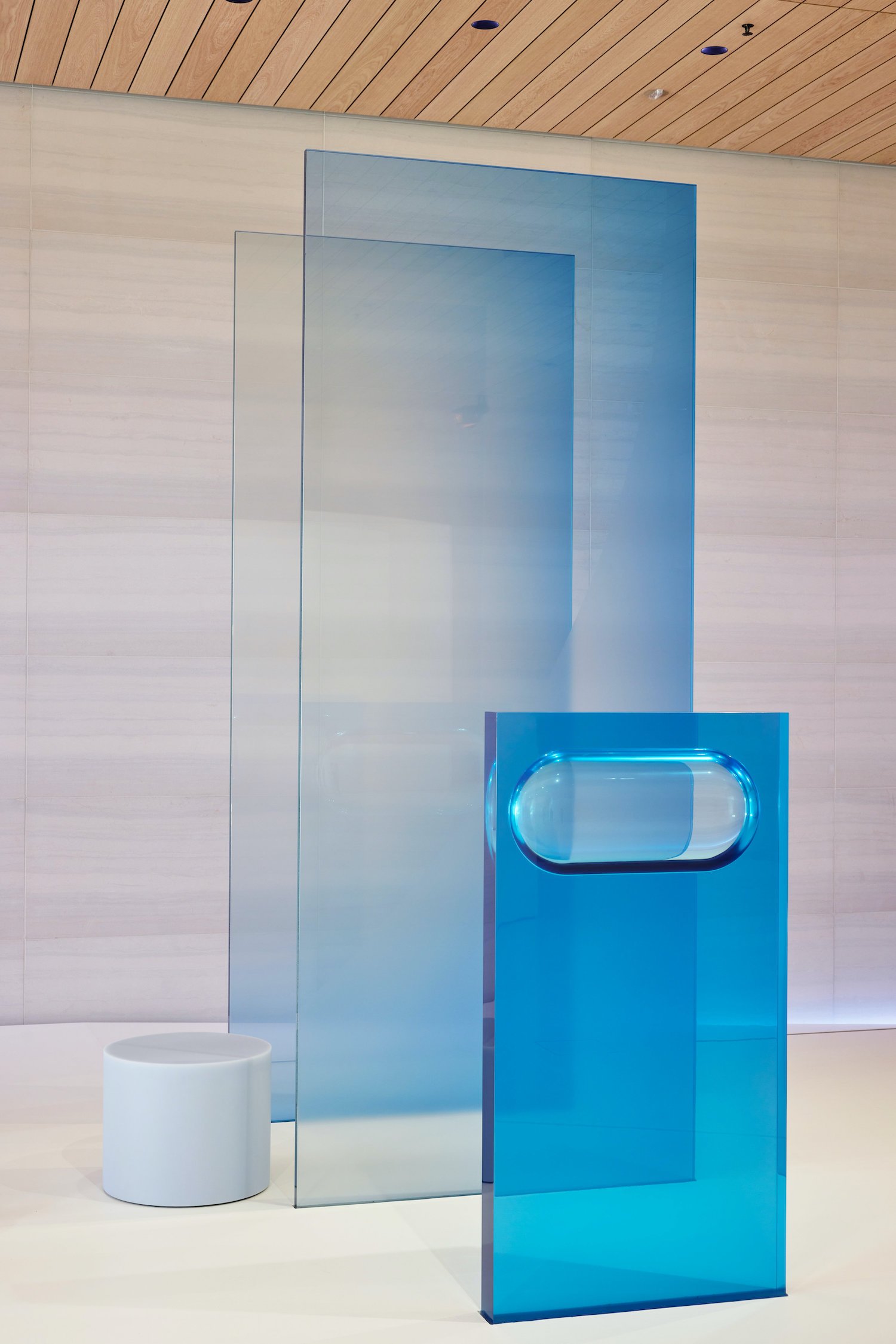
Marcelis, for her part, worked to translate these interface elements into a series of translucent partitions that were installed in the hillside event venue where Apple held its launch. Clustered in an area where visitors had a chance to interact with the new iPhone devices firsthand, a series of large glass screens were arranged alongside smaller totems made of resin and featuring rounded, water droplet-like accents. “It was almost a physical representation of a deconstructed Liquid Glass interface that you can meander through,” explains Marcelis. “The various volumes of resin were carved out to create a lensing effect, and the large upright glass surfaces featured different shades of colour, transparencies and surface treatments all together playing with your depth of vision and focus.”

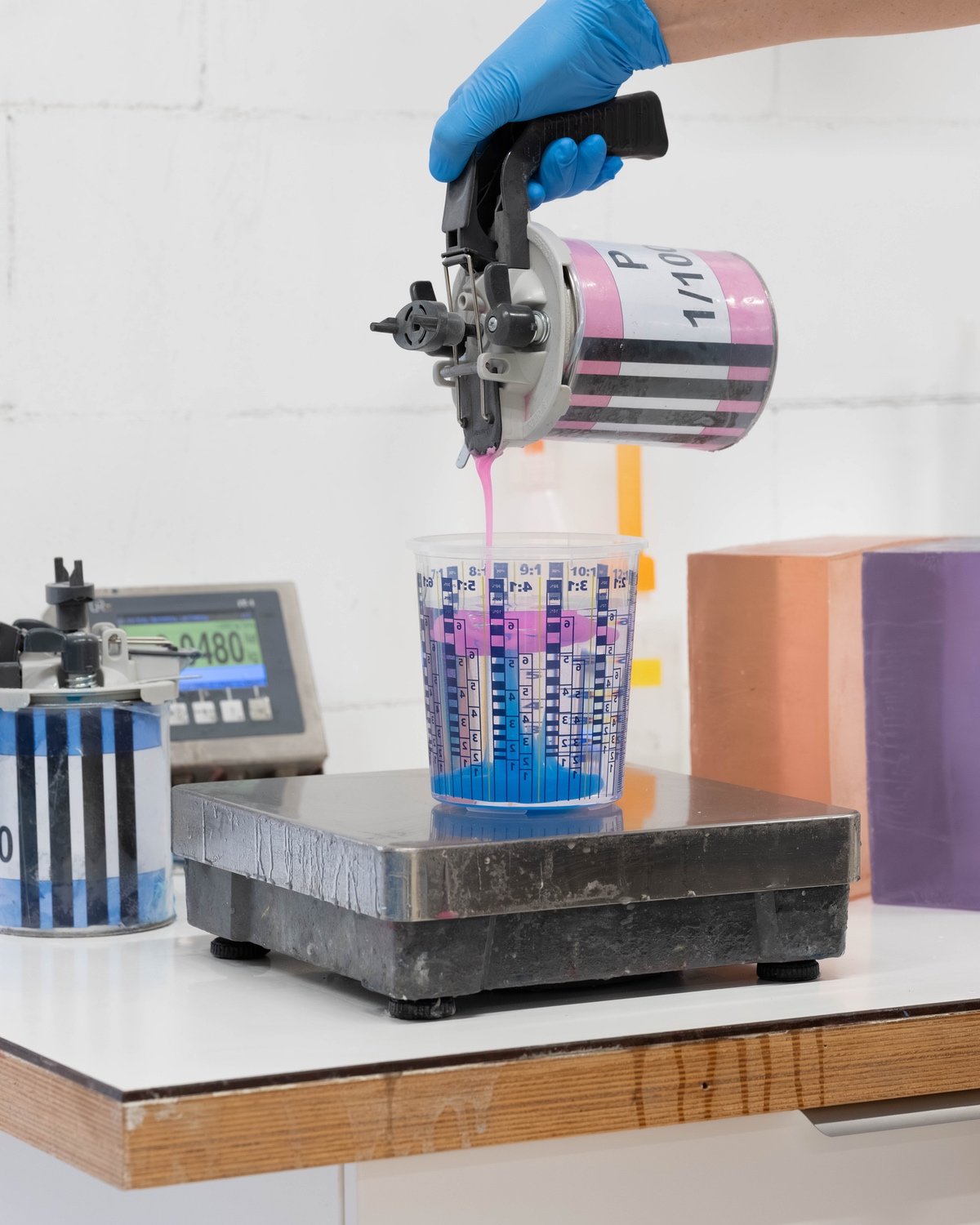
Speaking of colour, Marcelis fine-tuned the installation’s hues to coordinate with the latest iPhone lineup. “Apple’s Industrial Design team shared the colour palette of the new products with us so that we could match the works to them perfectly; including Cosmic Orange, Mist Blue and Lavender,” she says.
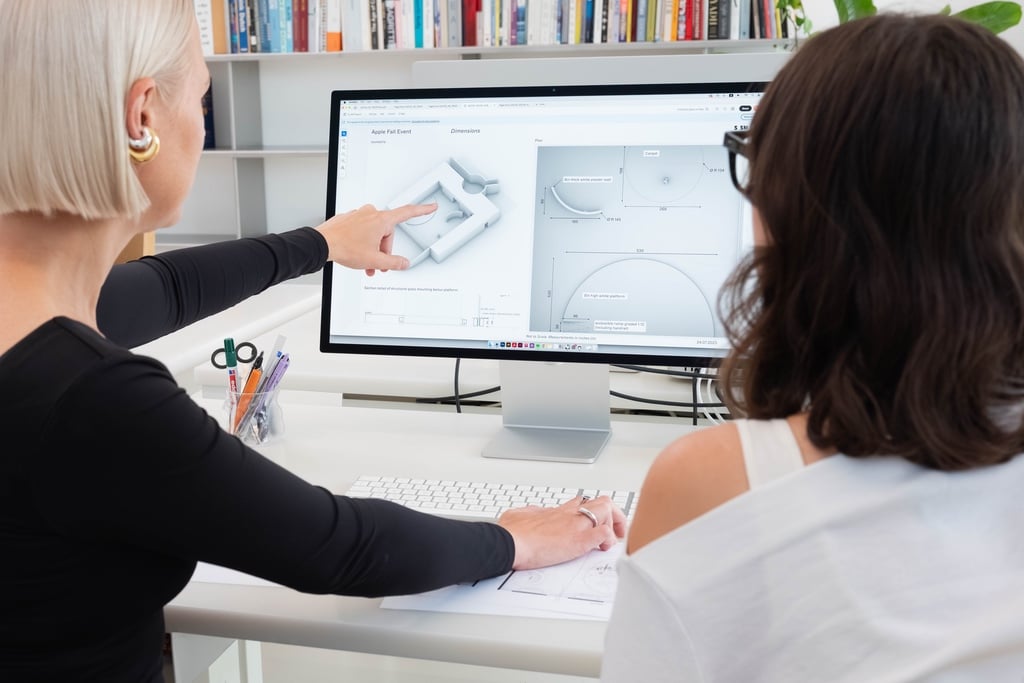
For Marcelis, the collaboration was also a chance to reflect the important role that technology plays in her design process. In this case, the project evolved on her Mac in Rhino, KeyShot and the Adobe suite, as well as through material experiments and tests. “It’s a constant back and forth for me between physical prototyping and digital prototyping. Colour creation in the glass was done digitally in Photoshop while the colour creation for the resin was done manually with pigments. And for the resin volumes, we experimented with different shapes of lenses in different colours to get the effect just right.” Like any busy creative, Marcelis stayed in a constant iMessage group chat with the project team throughout every step of the process. “Seamless communication is just as important in the creative process as the ideas themselves.”
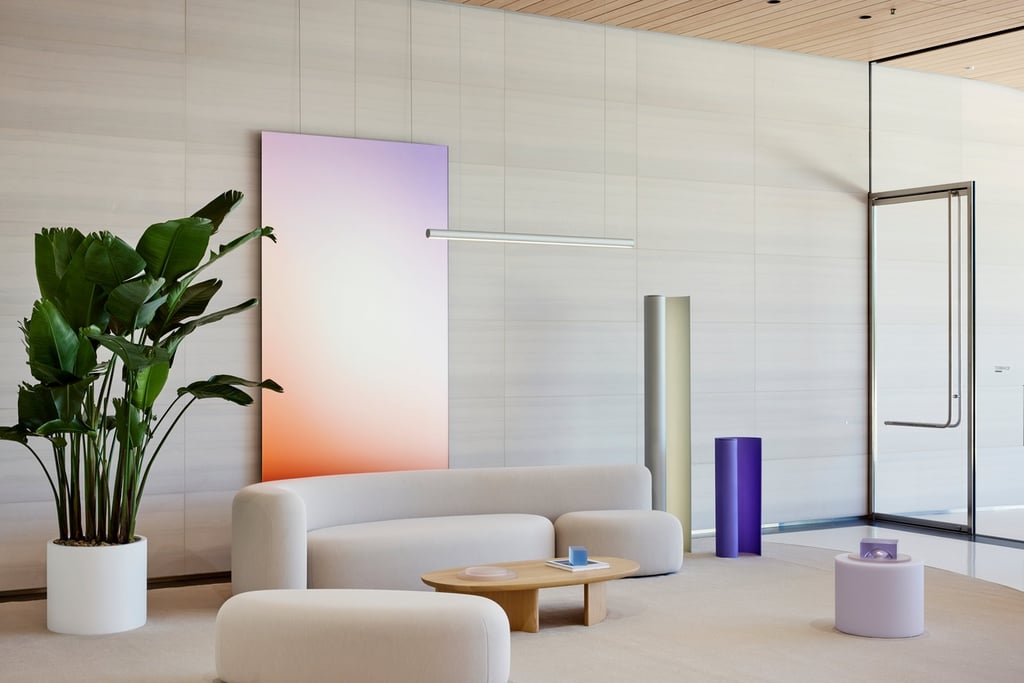
In another area of the Apple Park Observatory, a separate launch day lounge setup collected a variety of Marcelis’s greatest hits, including the curling aluminum Orbit lights (for Hydro), Lisse sofa (for La Cividina), Dew coffee table (for Arco) and Soap Column side tables.
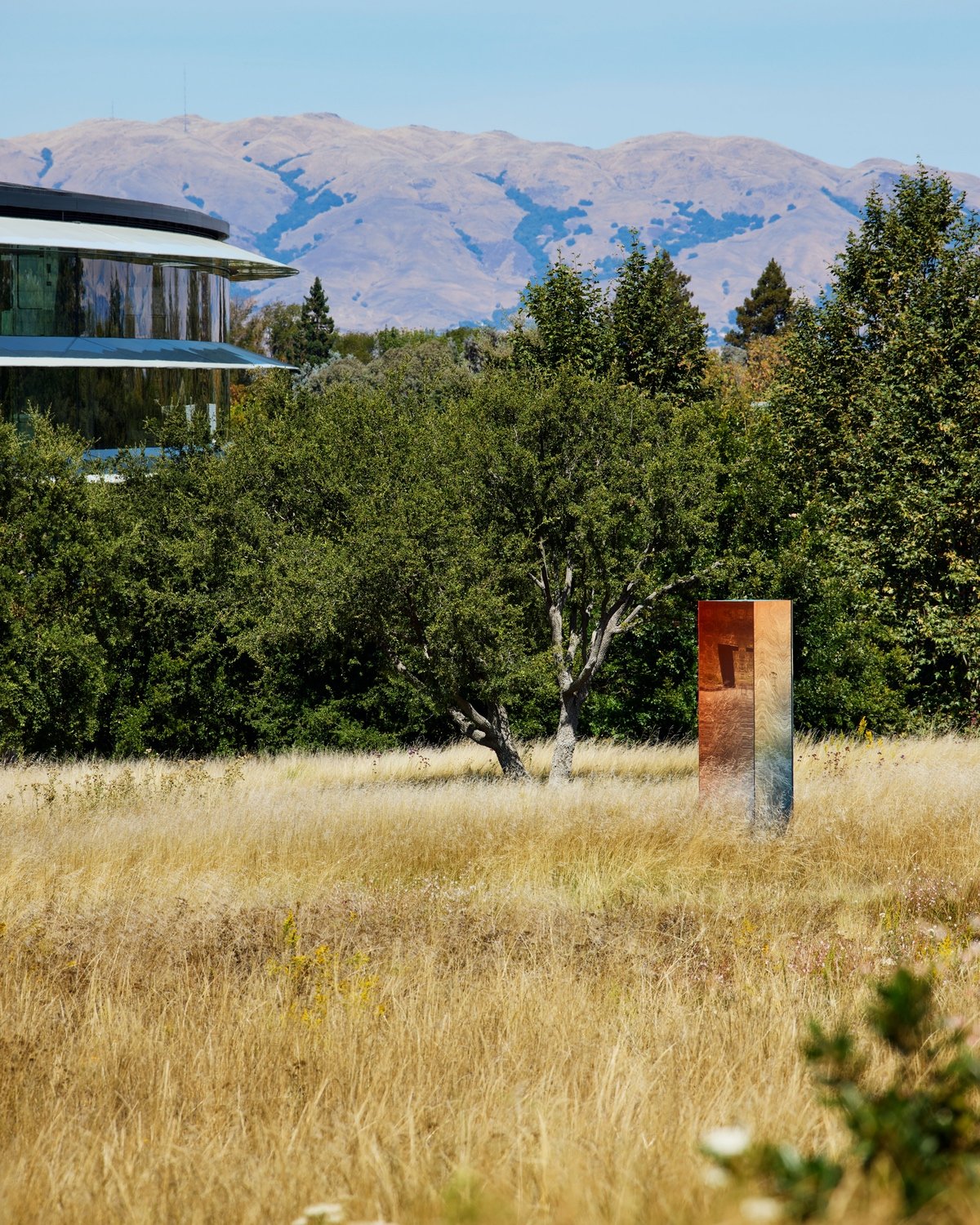
Of course, in true Apple fashion, there was one more thing in store: an outdoor sculpture by Marcelis visible out the window in the distance. “It could be zoomed in on using the incredible 8x optical-quality zoom on iPhone 17 Pro,” she notes. Beyond launch day, the sculpture will go on to find a permanent home at Apple. “I love how it not only represents the colours of the new products, but also works so nicely with the natural surroundings of Apple Park; the blue of the sky and the native grass reflecting into the artwork looks amazing,” says Marcelis. “I can’t wait to see how the orange hues in the artwork will complement the fall colours of the surrounding trees soon.”
Sabine Marcelis Reflects Apple’s New Designs With Translucent Totems
The Dutch designer adapts the colour palette and “Liquid Glass” user interface of the company’s latest iPhones into modern monoliths.
